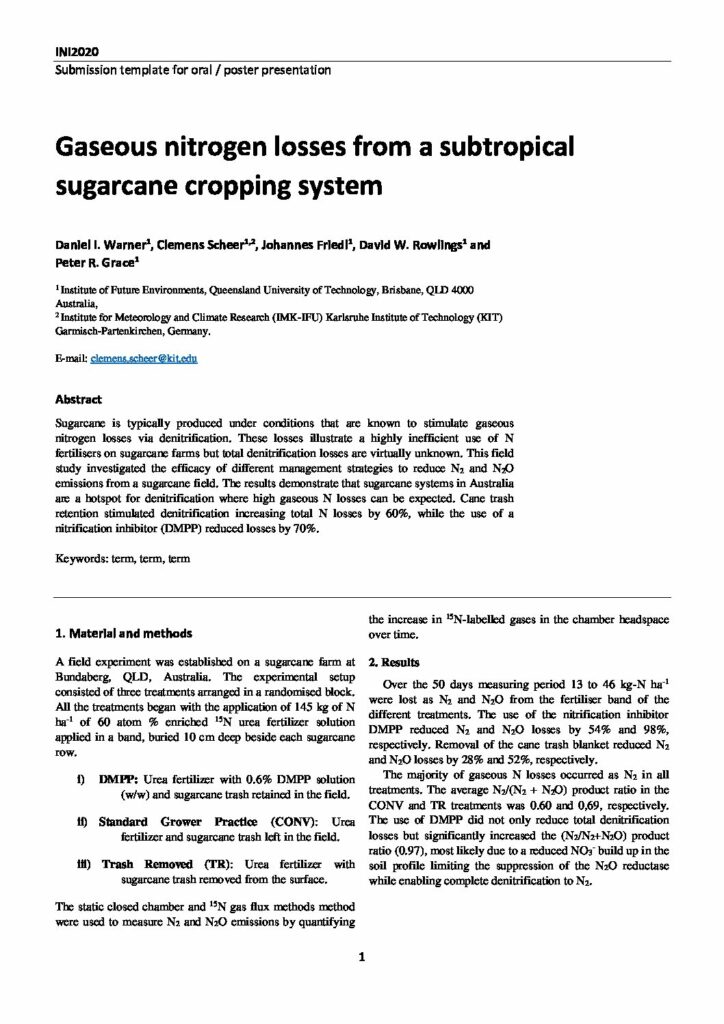Gaseous nitrogen losses from a subtropical sugarcane cropping system

Sugarcane is typically produced under conditions that are known to stimulate gaseous nitrogen losses via denitrification. These losses illustrate a highly inefficient use of N fertilisers on sugarcane farms but total denitrification losses are virtually unknown. This field study investigated the efficacy of different management strategies to reduce N2 and N2O emissions from a sugarcane field. The results demonstrate that sugarcane systems in Australia are a hotspot for denitrification where high gaseous N losses can be expected. Cane trash retention stimulated denitrification increasing total N losses by 60%, while the use of a nitrification inhibitor (DMPP) reduced losses by 70%.
A field experiment was established on a sugarcane farm at Bundaberg, QLD, Australia. The experimental setup consisted of three treatments arranged in a randomised block. All the treatments began with the application of 145 kg of N ha-1 of 60 atom % enriched 15N urea fertilizer solution applied in a band, buried 10 cm deep beside each sugarcane row.
